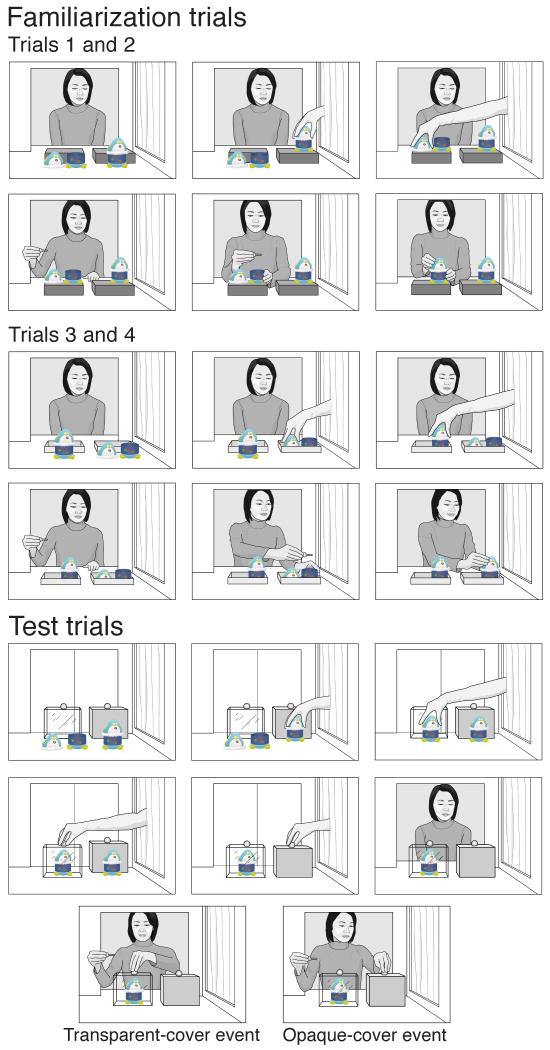Figure 3.
Can 18-month-olds attribute to an agent a false belief about an object's identity? In the false-belief experiment of Scott and Baillargeon [4], the infants received four familiarization trials involving two identical toy penguins; one could come apart (2-piece penguin) and one could not (1-piece penguin). As a female agent watched, an experimenter's gloved hands placed the 1-piece penguin and the two pieces of the disassembled 2-piece penguin on platforms in trials 1 and 2 and in shallow containers in trials 3 and 4. The agent then placed a key in the bottom piece of the 2-piece penguin, stacked the two pieces, and paused. During the test trials, while the agent was absent, the experimenter assembled the 2-piece penguin, covered it with a transparent cover, and then covered the 1-piece penguin with an opaque cover. The agent then entered the apparatus with her key, reached for either the transparent cover (transparent-cover event) or the opaque cover (opaque-cover event), and paused. Order of presentation of the two test events was counterbalanced.

